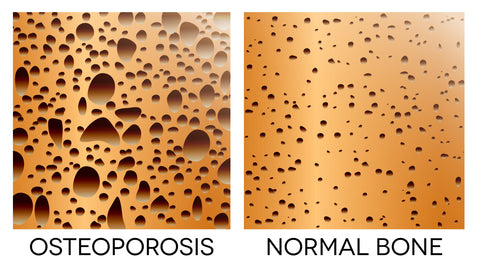by Suzanne Andrews

On a good day, I’m 5 foot 2 inches tall. I sometimes treat sweet little old ladies who claim that they are 5 foot 2. What I don’t have the heart to tell them is that they were 5 foot 2 and now they’re 4 foot 8. I took a medical certification course to see if there is anything us ladies over 40 can do about vertical shrinking and here’s what I learned….
It's been said the two things you can count on in life are death and taxes. It turns out there's a third thing that is nearly universal as we age: shrinking. That's right, most people begin losing height after the age of 40.
Shrinking with age has two major causes. The first is directly related to a combination of gravity and the discs in the back. The second is a disease known as osteoporosis. In both cases, poor posture can lead to an even shorter appearance by presenting a look of being slouched over.
Gravity and Discs
The discs in the back are composed of flexible, fibrous tissue that acts as a lubricant and a shock absorber for the spine. Each of the discs is positioned between two vertebrae, giving the spine the flexibility it needs for bending, twisting and turning.
As we age, the discs lose some of their flexibility and gelatinous nature. They also dry out, shrink and become hard over time. The lack of disc volume results in a natural loss of height in the same way pulling bricks out of a wall would reduce its overall height.
Keeping your bones strong as you age is the smartest and best thing to do for a good quality of life. Since a bone density test is the only way you’ll know if you have osteoporosis (thinning bones) or osteopenia (pre-osteoporosis) it’s important to talk with your doctor to see if you need one.
Other people who should undergo a bone density test include anyone who needed to use corticosteroid drugs for longer than three months, anyone with a family history of osteoporosis, people with chronic arthritis or kidney disease and those who have had any type of hormone treatment in the past. It's also a good idea to have a bone density test if you are a woman who has gone through menopause at an early age, or anyone who has noticed that they've lost at least an inch of height in a short time or who smokes or drinks heavily.
Osteoporosis happens as people age and bones become weaker and more brittle. There are steps to prevent osteoporosis fractures and to strengthen bones in anyone who has already been diagnosed in the early stages of osteoporosis. When a person with osteoporosis falls, bones not only break more easily, breaks can be more severe and fatal hip fractures can occur.
Most people are aware that getting extra calcium in the diet as we age is a good preventive measure. What most people aren't aware of, however, is that weight training also helps to strengthen bones and to keep the onset of osteoporosis at bay. Walking and other weight-bearing exercise is always recommended for overall good health. In addition, training by using and lifting weights a specific way also helps to increase strength and to strengthen bones and build more bone mass.
Because rehab therapists go through years of education and continue that education with medical certification courses using evidenced based techniques that demonstrate not only how much weight should be used, how many repetitions a person should do to see the most benefit, but also the correct speed at which the weight should be lifted for the most bone gain with the least injury risk. So get going and put a deposit in your bone bank today!
Suzanne Andrews is a licensed Occupational Therapy Clinician with 30 years exercise expertise. Airing to over 49 million on Public Television, Suzanne Andrews, a licensed Occupational Therapy Clinician, (they specialize in function) creates evidenced based fitness programs for specific health conditions. Originally created in 2008 with it’s first run on WDSC TV, Functional Fitness with Suzanne Andrews broadcasts on 113 Public Television stations.






